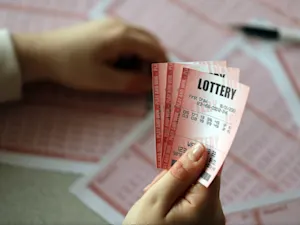
Seat 11A Saves Lives in Two Plane Crashes
What are the odds that two unrelated plane crashes, nearly three decades apart, would produce only one survivor each — both seated in 11A? It might sound like a page from a supernatural thriller, but it's a hauntingly real story that stretches across continents and decades. The survivors, Ramesh Viswashkumar from a recent Air India crash, and Ruangsak Loychusak from a 1998 Thai Airways disaster, now share a grim bond over the seat that spared their lives.
A Tragedy Over India
On June 13, 2025, Air India Flight AI-171 went down shortly after takeoff from Ahmedabad, India, crashing into a building before bursting into flames. Among the 242 people onboard, only one man survived: 38-year-old British-Indian citizen Viswash Kumar Ramesh, who was seated in 11A. As the aircraft exploded into chaos, Ramesh found himself amidst wreckage, bloodied and disoriented, but alive.
Ramesh said the plane felt stuck seconds after takeoff. After crashing, he saw a gap through what he described, according to the New York Times, as his "broken door" and somehow unbuckled and escaped through the exit row. The tail had smashed into a building, but the front landed in an open area — a lucky break that might have made his escape possible.
A Haunting Parallel From 1998
The uncanny twist came when Ruangsak Loychusak, a Thai pop singer and survivor of the 1998 Thai Airways crash, recognized the familiar seat number. His plane had crashed while attempting to land at Surat Thani Airport in Thailand. Of the 146 people onboard, 101 died. Loychusak, then seated in 11A, was one of the few who survived.
He later shared that the psychological toll of survival haunted him for years. He suffered panic attacks while flying and refused to let others close the window next to him. He'd cling to whatever helped him feel in control amid the post-traumatic fog.
Brothers Torn Apart
Ramesh's survival came with an unbearable loss. His brother Ajay, seated in 11J, did not survive the AI-171 crash. The two had lived in the UK for more than 15 years and were co-owners of a garment business in London and a fishing operation in their hometown of Diu.
Ramesh reportedly made a video call from near the crash wreckage to assure his family in Leicester that he was alive. While stunned family members rejoiced at his survival, grief ran parallel. The house was both a place of mourning for Ajay and a monument to a miracle for Ramesh.
Coincidence or Clue?
The strange link between the two 11A survivors has sparked online speculation and professional curiosity alike. Aviation experts have long studied seating charts for insights into survival rates, but no definitive pattern has emerged. Exit rows, where both men sat, do statistically offer better chances due to easier access to emergency exits.
Yet, it's difficult to ignore the eerie synchronicity. Loychusak and Ramesh, both seated in 11A, both survivors in catastrophes that defied odds. The numbers are chilling. Flight TG261 had a fatality rate of nearly 70 percent. Flight AI-171 claimed 241 lives out of 242.
Could this just be randomness at play? Aviation analysts lean toward coincidence, albeit a remarkable one. Factors such as crash dynamics, seat construction, and proximity to exits all contribute to outcomes. Still, the narrative of 11A refuses to be purely clinical.
Living With Survival
Both men now carry the weight of their improbable escapes. For Ramesh, recovery is ongoing, both physically and emotionally. According to the New York Times, he told India's Doordarshan network from his hospital bed, "I still can't believe how I got out alive."
Loychusak echoed similar disbelief in interviews years after the Thai crash. The emotional recovery, he noted, was harder than physical wounds. Survivor's guilt often leads to isolation and depression, and both men experienced anxiety while flying again.
Still, their stories are a testament to human resilience. In separate timelines and different skies, they survived the unthinkable. Seat 11A, once just another number in the cabin, now holds a legacy that stretches beyond steel and statistics.
The Butterfly Effect
You can chalk it up to coincidence, fate, or a mystery yet unexplained. But the tale of seat 11A is undeniably captivating. Whether it prompts rethinking aircraft design or simply gives pause the next time you board a flight, it reminds us how fragile and unpredictable life can be. And for Ramesh and Loychusak, survival means living with the paradox of being extraordinarily lucky and heartbreakingly marked — all because of where they happened to sit.
References: The Mysterious Seat 11A: How Two Plane Crash Survivors Cheated Death From The Same Seat Number | How the Man in Seat 11A Became a Plane Crash’s Sole Survivor
























